9. Preparing for a Career Launch
Preparing for a career launch means taking the necessary steps to position yourself for success as you begin or transition into your professional life. It involves both personal and professional development, ensuring you’re ready to enter the workforce with the right skills, mindset, and resources.
How to Find Your First Job in Fashion Design
Breaking into the fashion industry can be challenging, but with the right strategy, you can land your first job in fashion design. Here’s a step-by-step guide to help you get started.
1. Build a Strong Portfolio
A well-crafted portfolio showcases your creativity, technical skills, and unique style.
- Include sketches, mood boards, fabric choices, and finished designs.
- Demonstrate a variety of styles and techniques to show versatility.
- Present your work in both digital and physical formats.
- Keep it updated with your latest and best designs.
2. Gain Experience Through Internships & Freelance Work
Many fashion designers start their careers by interning or taking freelance projects.
- Apply for internships at fashion houses, design studios, or retail brands.
- Offer to assist established designers to learn hands-on skills.
- Take freelance projects, such as custom clothing or small capsule collections.
- Participate in fashion competitions to showcase your talent.
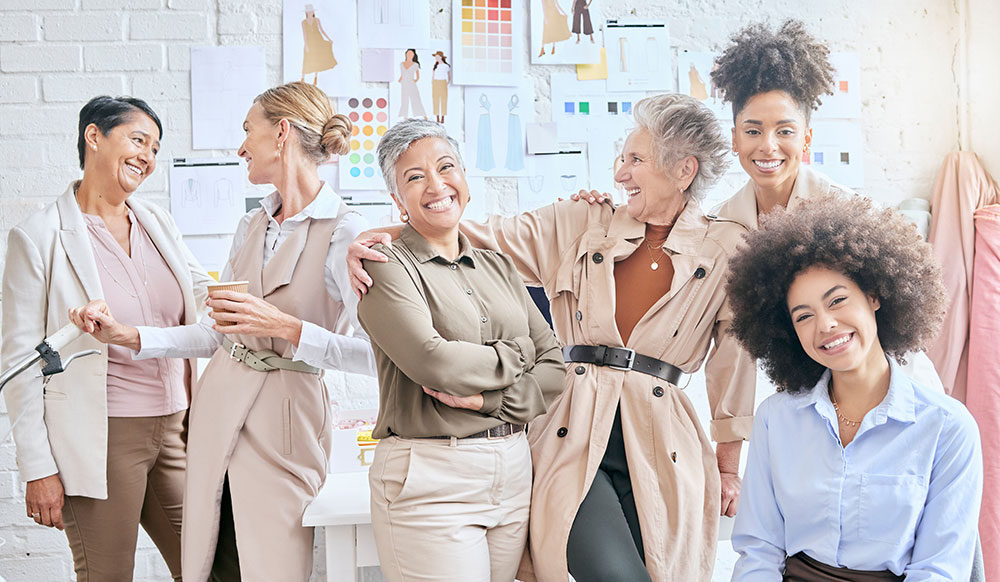
3. Network with Industry Professionals
Networking can lead to job opportunities and mentorship.
- Attend fashion events, trade shows, and career fairs.
- Connect with professionals on LinkedIn, Instagram, and fashion forums.
- Join fashion industry groups or alumni networks from your school.
- Reach out to designers, stylists, and recruiters for advice and potential opportunities.
4. Enhance Your Technical Skills
Fashion designers need strong technical skills to succeed.
- Master Adobe Illustrator, Photoshop, and pattern-making software.
- Learn about textile selection, garment construction, and draping techniques.
- Take online courses or attend workshops to refine your skills.
5. Create an Online Presence
A strong digital presence can attract job opportunities.
- Showcase your portfolio on a personal website or platforms like Behance.
- Post your designs, sketches, and process work on Instagram, TikTok, or Pinterest.
- Start a blog or YouTube channel discussing fashion trends and design processes.
6. Apply for Entry-Level Jobs & Apprenticeships
Look for positions that provide industry experience, such as:
- Assistant Designer
- Pattern Maker
- Technical Designer
- Production Assistant
- Fashion Illustrator
Search on job portals like LinkedIn, Indeed, Fashion Workie, and BoF Careers. Customize your resume and cover letter for each job application.
7. Be Persistent and Stay Creative
Breaking into the fashion industry takes time and effort. Keep designing, improving your skills, and applying for opportunities. Stay up to date with industry trends and be open to starting small to gain experience.

Crafting a Winning Resume and Cover Letter
When applying for a fashion design job or internship, your resume and cover letter must showcase your creativity, technical skills, and industry experience. A well-crafted application can help you stand out in a competitive field.
1. Writing a Strong Fashion Design Resume
Essential Sections to Include
- Contact Information:
- Full name
- Phone number
- Professional email address
- Portfolio website or online portfolio link
- LinkedIn or social media (if relevant to your work)
- Professional Summary (2-3 sentences at the top of your resume)
- This section should highlight your skills, experience, and career goals in a compelling way.
- Example:
- “Innovative and detail-oriented fashion designer with expertise in fashion sketching, pattern making, and digital design. Skilled in trend research, fabric selection, and creating cohesive collections that align with market demands. Passionate about sustainable fashion and blending creativity with functionality to develop unique, commercially viable designs.”
- Skills Section
- Tailor this section to match the job description. Examples include:
- Fashion Sketching & Illustration
- Sewing & Garment Construction
- Pattern Making & Draping
- Adobe Illustrator & Photoshop
- Clo 3D or other CAD software
- Trend Analysis & Forecasting
- Fabric & Textile Knowledge
- Sustainable Fashion Practices
- Tailor this section to match the job description. Examples include:
- Work Experience (List most recent experience first)
- For each role, include:
- Job Title, Company Name, Location (Month/Year – Present)
- Key Responsibilities & Achievements (Use bullet points)
- For each role, include:
- Education & Certifications
- Include:
- Degree in Fashion Design (or related field) – School Name, Graduation Year
- Additional certifications (e.g., digital fashion design, sustainable fashion)
- Include:
- Internships & Freelance Projects (If applicable)
- If you lack full-time experience, highlight internships or freelance work.
- Awards, Exhibitions, or Fashion Competitions (Optional, but helps you stand out)
- Languages & Additional Skills (If applicable, e.g., bilingual skills, business knowledge)
2. Writing an Effective Cover Letter
A cover letter should complement your resume by telling your personal story, explaining your passion for fashion, and demonstrating why you are the best candidate.
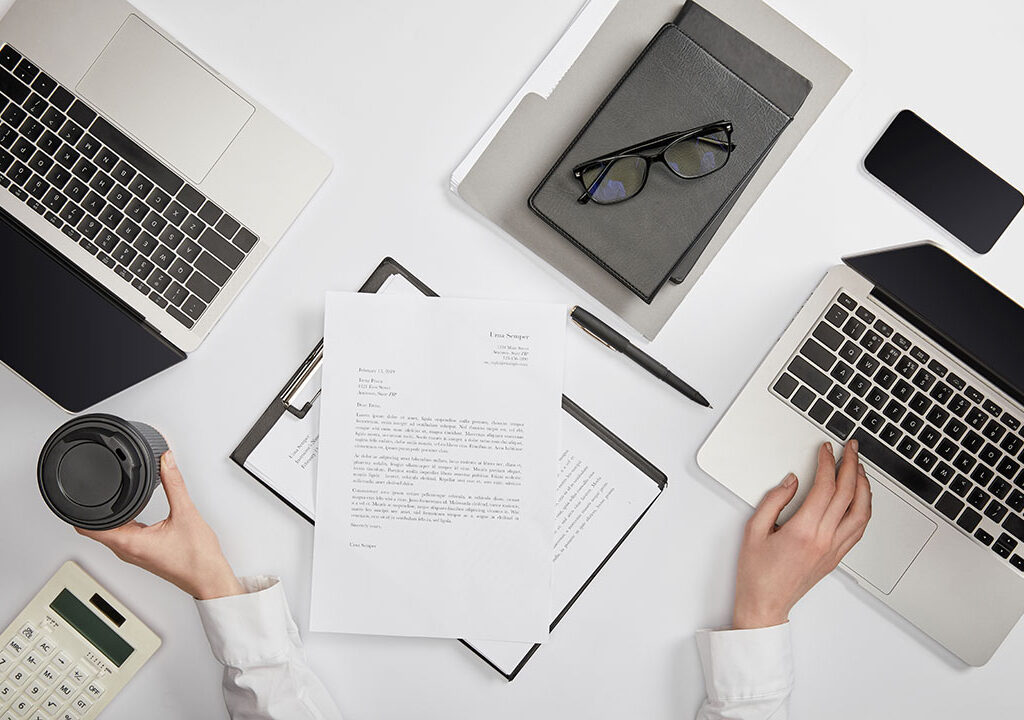
Cover Letter Structure
1. Header
Include:
- Your Name
- Your Contact Information
- Date
- Hiring Manager’s Name
- Company Name & Address
2. Opening Paragraph: Strong Introduction
Grab attention by briefly stating who you are, your passion for fashion, and why you’re applying.
Example:
“As a passionate fashion designer with a keen eye for detail and a deep understanding of fabric construction, I am excited to apply for the Fashion Designer position at [Company Name]. My experience in apparel design, trend research, and technical garment development aligns perfectly with your brand’s vision.”
3. Middle Paragraph: Showcase Skills & Experience
- Highlight specific achievements from your resume.
- Mention how your skills align with the company’s needs.
- If you have an impressive project, internship, or collaboration, include it here.
Example:
“At [Previous Company], I assisted in designing a best-selling capsule collection that increased seasonal sales by 20%. I have strong skills in pattern making, Adobe Illustrator, and sustainable material sourcing, making me an ideal fit for your eco-conscious fashion line.”
4. Closing Paragraph: Call to Action
- Express enthusiasm about the opportunity.
- Mention that you would love to discuss further in an interview.
- Thank the hiring manager for their time.
Example:
“I am excited about the opportunity to contribute my creativity, technical skills, and passion for fashion design to your team. I look forward to the possibility of discussing how my experience and vision align with your brand’s goals. Thank you for your time and consideration—I would love the opportunity to bring fresh ideas and innovation to your company.”
5. Sign-Off
- Best regards,
- Your Name

Tips for Acing Fashion Design Interviews
Landing a job in fashion design requires more than just talent—it’s about how you present yourself, your portfolio, and your understanding of the industry. Here’s how to impress potential employers and ace your interview.
1. Research the Brand or Company
Before the interview, thoroughly research the company’s history, design aesthetic, target audience, and recent collections.
- Study their brand identity, mission, and values.
- Understand their design style and how your skills align with it.
- Be ready to discuss their latest collection and offer insights.
2. Perfect Your Portfolio
Your portfolio is the centerpiece of your interview, so make sure it’s well-organized and showcases your best work.
- Include hand-drawn sketches, digital illustrations, fabric choices, and finished garments.
- Demonstrate versatility with different styles, techniques, and categories.
- Keep your presentation clean and professional, with a mix of physical and digital formats.
- Be prepared to explain your design process, inspirations, and technical skills.
3. Dress the Part
Your outfit should reflect your personal style while being appropriate for the company.
- If applying to a high-fashion brand, opt for a chic and sophisticated look.
- For a streetwear or casual brand, a trendy yet professional outfit works best.
- Avoid overly flashy or distracting outfits—let your portfolio be the focus.
4. Be Ready to Talk About Your Skills and Experience
Expect to discuss your:
- Design process – From concept to final product.
- Technical skills – Pattern-making, sewing, digital design (Illustrator, Photoshop, etc.).
- Industry experience – Internships, freelance work, or collaborations.
- Problem-solving abilities – How you handle design challenges or tight deadlines.
5. Show Passion and Creativity
Fashion is all about innovation, so let your enthusiasm for design shine through.
- Share personal experiences that highlight your creative problem-solving.
- Talk about what inspires you and how you stay ahead of fashion trends.
- Show excitement about the brand and how you can contribute to their vision.
6. Prepare for Common Fashion Design Interview Questions
- “Tell me about yourself and your design background.”
- “What inspires your designs?”
- “Describe your design process from start to finish.”
- “How do you stay updated on fashion trends?”
- “Tell us about a time you faced a design challenge and how you solved it.”
- “Why do you want to work for our brand?”
Prepare concise and confident answers with real examples from your experience.
7. Ask Thoughtful Questions
Show interest in the role by asking insightful questions, such as:
- “What qualities do you look for in a designer for this role?”
- “How does the design team collaborate with other departments?”
- “Are there opportunities for growth and creative input in this role?”
8. Follow Up with a Thank-You Email
Send a thank-you email within 24 hours, expressing appreciation for the opportunity and reiterating your enthusiasm for the role. Mention a key point from the interview to make it more personal.
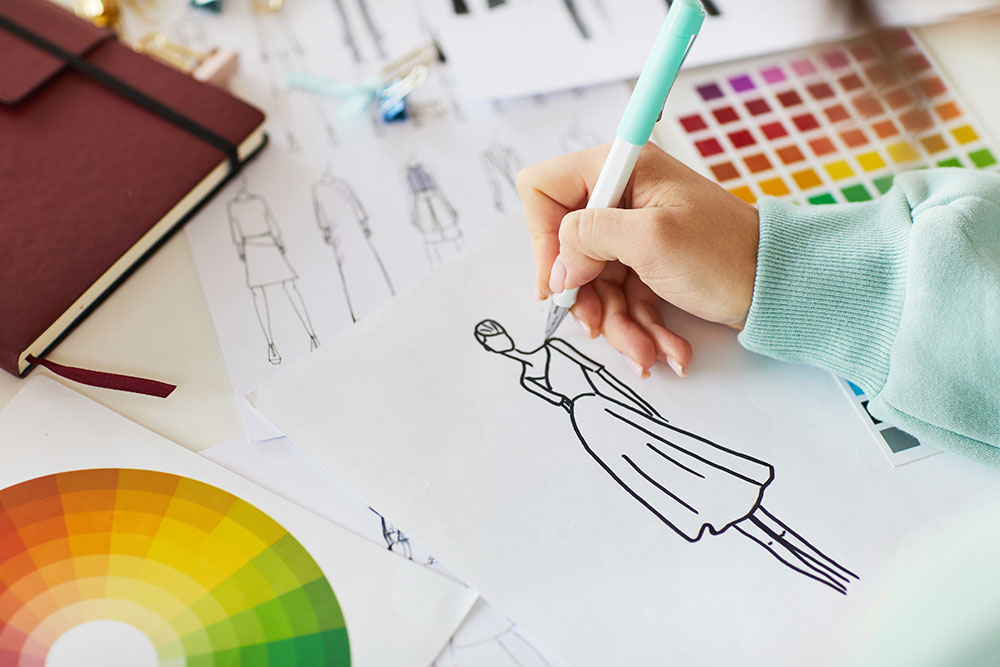
Participating in Design Competitions
Fashion design competitions are a great way for emerging designers to gain industry recognition, showcase their creativity, and build a strong portfolio. These contests provide a platform to test skills, receive feedback from industry professionals, and network with potential employers or investors.
How Competitions Help Build Your Career
Entering fashion competitions can be a powerful way to gain recognition, improve skills, and open doors to career opportunities. Whether you’re an aspiring designer, student, or emerging professional, competitions can give you an edge in the industry.
1. Gain Industry Recognition & Exposure
Winning or even being a finalist in a prestigious competition puts your work in front of top industry professionals. Many competitions are judged by fashion executives, designers, and influencers, giving you direct exposure to key decision-makers.
- Recognition from competitions can lead to job offers, collaborations, and media features.
- Some winners are invited to showcase their work at fashion weeks and major exhibitions.
2. Strengthen Your Portfolio & Resume
Competitions push you to create innovative designs that make your portfolio stand out.
- Adding awards or finalist placements to your resume shows industry credibility.
- The designs you create for competitions can be used in future job applications and presentations.
3. Improve Your Technical & Creative Skills
Fashion competitions challenge you to think outside the box, experiment with new techniques, and refine your craftsmanship.
- Working on competition projects improves sketching, draping, sewing, and digital design skills.
- Many contests have specific themes or sustainability challenges that encourage you to explore new design approaches.
4. Networking & Industry Connections
Competitions provide a platform to connect with industry leaders, mentors, and fellow designers.
- Finalists often get the chance to present their work at events where they can meet recruiters, buyers, and investors.
- Engaging with other participants expands your professional network and could lead to future collaborations.
5. Access to Funding & Resources
Many fashion competitions offer cash prizes, scholarships, internships, and mentorship programs.
- Winning can help fund your next collection or start your own brand.
- Some competitions provide sponsorships, studio space, and materials to support your designs.
6. Boost Confidence & Career Motivation
Participating in a competition—whether you win or not—helps you develop resilience, adaptability, and confidence.
- Receiving feedback from judges can help refine your work and prepare you for real-world challenges.
- The experience of presenting your designs helps build public speaking and storytelling skills, which are essential for branding and marketing.
Popular Fashion Design Contests to Enter
- LVMH Prize – For emerging designers (ages 18-40) with at least two collections. Winners receive funding and mentorship from LVMH experts.
- International Talent Support (ITS) – A global platform for young designers in fashion, accessories, and jewelry, offering exposure and networking with industry leaders.
- Junk Kouture – A competition for students (ages 13-18) to create haute couture from recycled materials, with international finals in major fashion capitals.
- Australia’s National Designer Award – Recognizes emerging Australian designers, offering a $20,000 business development package to winners.
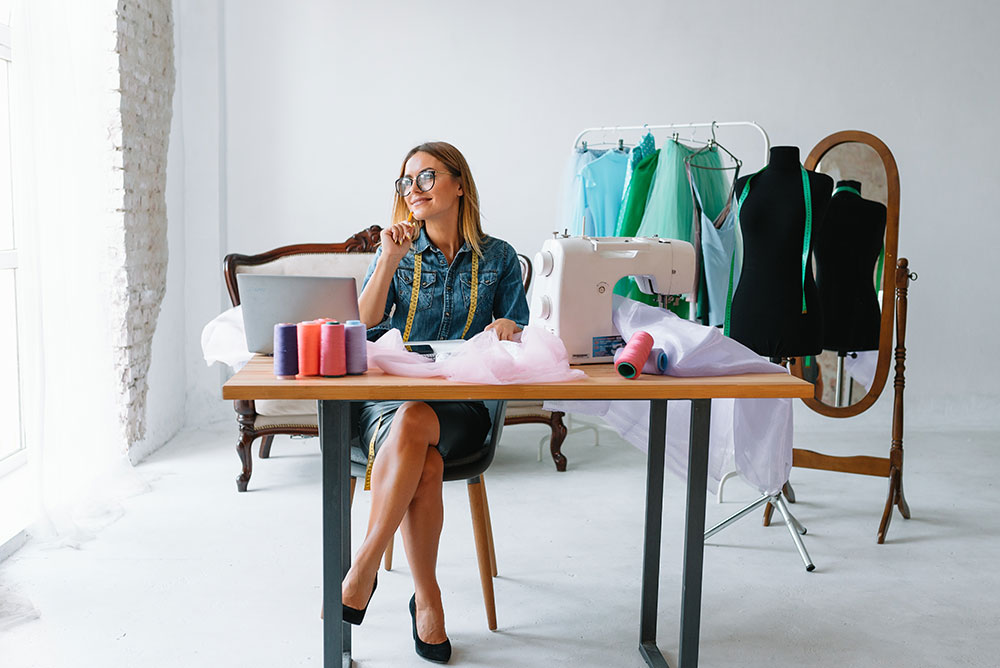
10. Specializing in a Niche
Specializing in a niche means focusing on a specific segment of the fashion industry that aligns with your skills, interests, and market demand. Rather than designing for a broad audience, niche designers cater to a targeted group of consumers with unique preferences, ensuring their work stands out in a competitive industry.
Choosing a Fashion Design Specialization
Fashion design offers various specializations, and choosing the right one depends on your interests, skills, and career goals. Here’s how to decide:
1. Identify Your Interests & Strengths
- Do you enjoy designing high-fashion pieces or prefer casual wear?
- Are you passionate about sustainability, technology, or textiles?
- Do you prefer working on creative concepts or technical construction?
2. Explore Different Specializations
- Haute Couture – High-end, custom-made garments.
- Ready-to-Wear (RTW) – Fashionable yet mass-produced clothing.
- Streetwear – Trend-driven casual and urban fashion.
- Sustainable Fashion – Eco-friendly and ethical clothing design.
- Sportswear & Athleisure – Functional yet stylish activewear.
- Accessories Design – Shoes, handbags, jewelry, and eyewear.
- Textile Design – Creating unique fabrics and prints.
- Costume Design – Designing for film, theater, or TV productions.
- Technical Design – Focusing on garment construction and fit.
3. Consider Career Opportunities
- Luxury brands, mass retailers, or startups? Different specializations align with different industries.
- Freelance or corporate? Some fields, like haute couture, often require working for established brands, while others, like streetwear, allow independent growth.
4. Gain Experience & Experiment
- Take internships in different areas to see what excites you.
- Work on personal projects or competitions to test your skills.
- Take courses in specialized areas like textiles, sustainability, or digital fashion.
5. Follow Industry Trends
- Research demand for each specialization. For example, sustainable fashion and digital fashion (3D design, virtual garments) are growing rapidly.
- Follow designers in different niches to see what aligns with your vision.
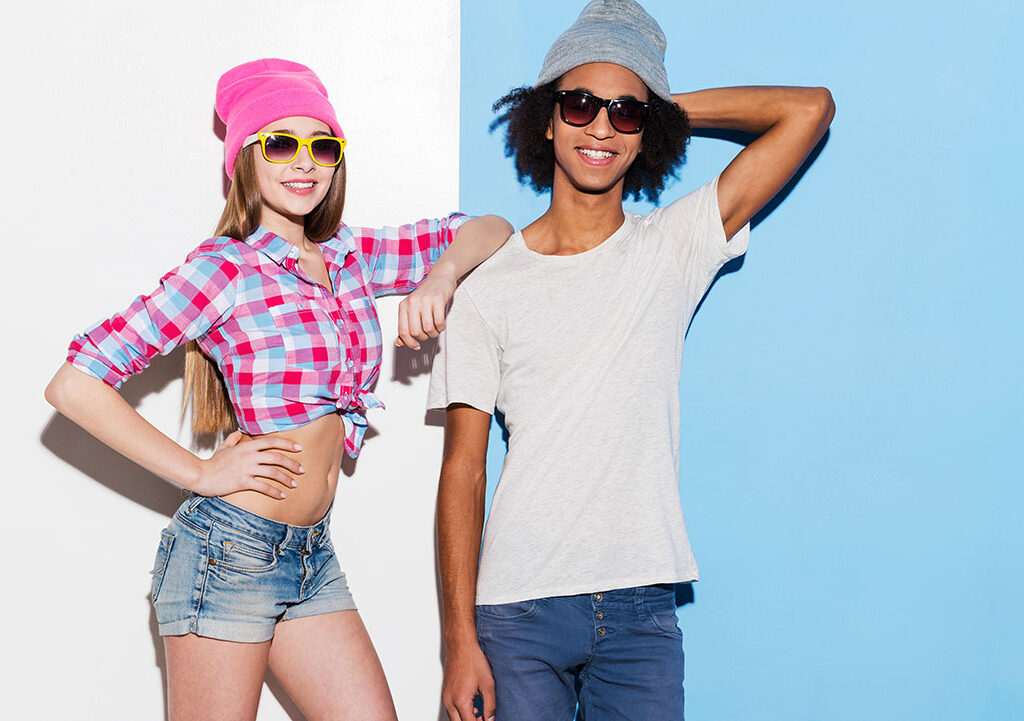
Women’s Wear, Men’s Wear, Kid’s wear
Fashion design is often categorized into three primary segments: women’s wear, men’s wear, and kids’ wear. Each category has distinct design principles, market trends, and consumer preferences.
Women’s Wear
Women’s fashion is the most diverse and dynamic category, ranging from casual wear to haute couture. It includes dresses, skirts, blouses, outerwear, activewear, and formal attire. Designers in this field must stay updated with fast-changing trends and consider factors like fabric draping, fit, and embellishments.
- Key Subcategories: Ready-to-wear, eveningwear, bridal fashion, sustainable fashion, and athleisure.
- Challenges: Rapid trend cycles, high competition, and varying body shapes to accommodate.
- Opportunities: Expanding markets in plus-size, modest, and sustainable women’s fashion.
Men’s Wear
Men’s fashion has evolved beyond traditional suits and casualwear to include streetwear, athleisure, and luxury styles. While trends change slower than in women’s fashion, men’s wear requires attention to tailoring, structure, and fabric quality.
- Key Subcategories: Formalwear, casualwear, sportswear, streetwear, and luxury menswear.
- Challenges: Traditional silhouettes dominate the market, making innovation more challenging.
- Opportunities: Growing demand for gender-fluid designs and eco-friendly materials.
Kids’ Wear
Children’s fashion combines comfort, functionality, and style. Designs must be practical for movement and growth while appealing to both children and parents. Safety regulations and fabric choices play a significant role in this segment.
- Key Subcategories: Infant wear, toddler wear, schoolwear, special occasion wear, and activewear.
- Challenges: Sizing complexities, safety standards, and shorter product life cycles.
- Opportunities: Sustainable and organic kids’ clothing is a growing market.
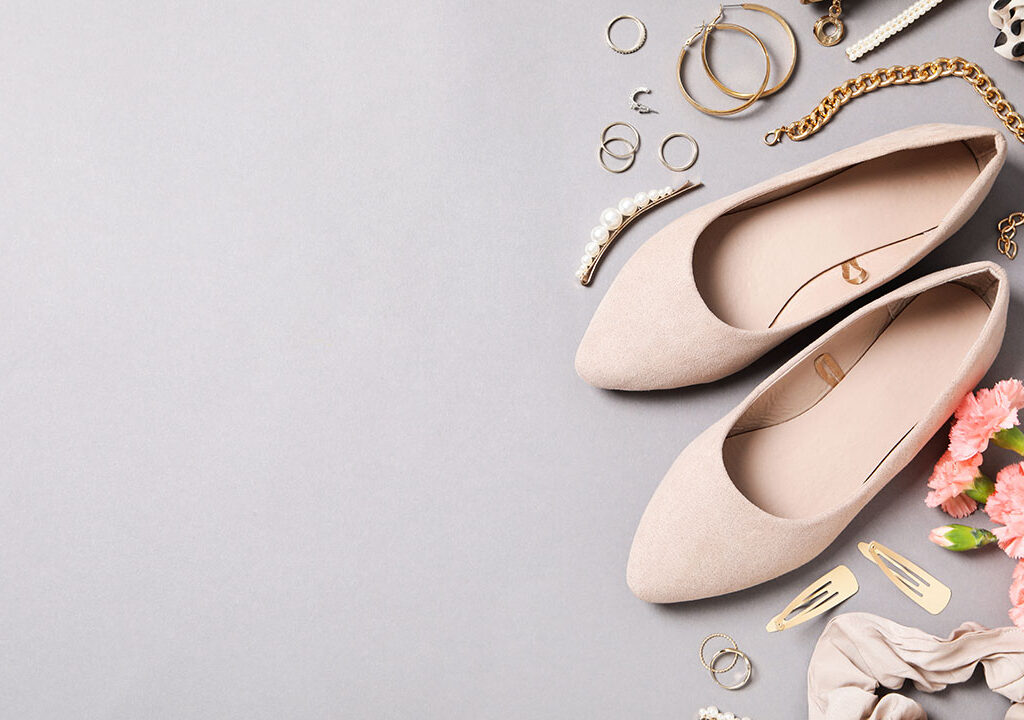
Footwear or Accessory Design
Both footwear design and accessory design offer exciting opportunities in fashion, but choosing between them depends on your interests, skills, and career goals. Here’s a breakdown to help you decide:
Footwear Design
What It Involves:
- Designing shoes, sneakers, boots, heels, and sandals.
- Working with materials like leather, rubber, textiles, and synthetics.
- Understanding ergonomics, comfort, and durability.
Skills Needed:
- Sketching and CAD skills (Adobe Illustrator, Rhino, Procreate).
- Knowledge of shoe construction and materials.
- Awareness of market trends and biomechanics.
Career Paths:
- Work with luxury brands, sportswear companies, or independent labels.
- Develop your own footwear brand.
- Specialize in sneaker design, high heels, or orthopedic shoes.
Best for You If:
- You enjoy technical design and working with materials.
- You like combining fashion and functionality.
- You are interested in sportswear or high-end craftsmanship.
Accessory Design
What It Involves:
- Creating bags, belts, hats, sunglasses, jewelry, and watches.
- Working with leather, metal, fabric, plastics, and embellishments.
- Focusing on both aesthetics and practicality.
Skills Needed:
- Knowledge of materials and production techniques.
- Strong design and illustration skills.
- Understanding of branding and fashion trends.
Career Paths:
- Work with fashion houses, luxury brands, or accessory-specific companies.
- Launch your own line of handbags, jewelry, or eyewear.
- Collaborate with designers to create custom accessories.
Best for You If:
- You love intricate details and small-scale design.
- You enjoy working with a variety of materials.
- You want to explore different product categories within fashion.
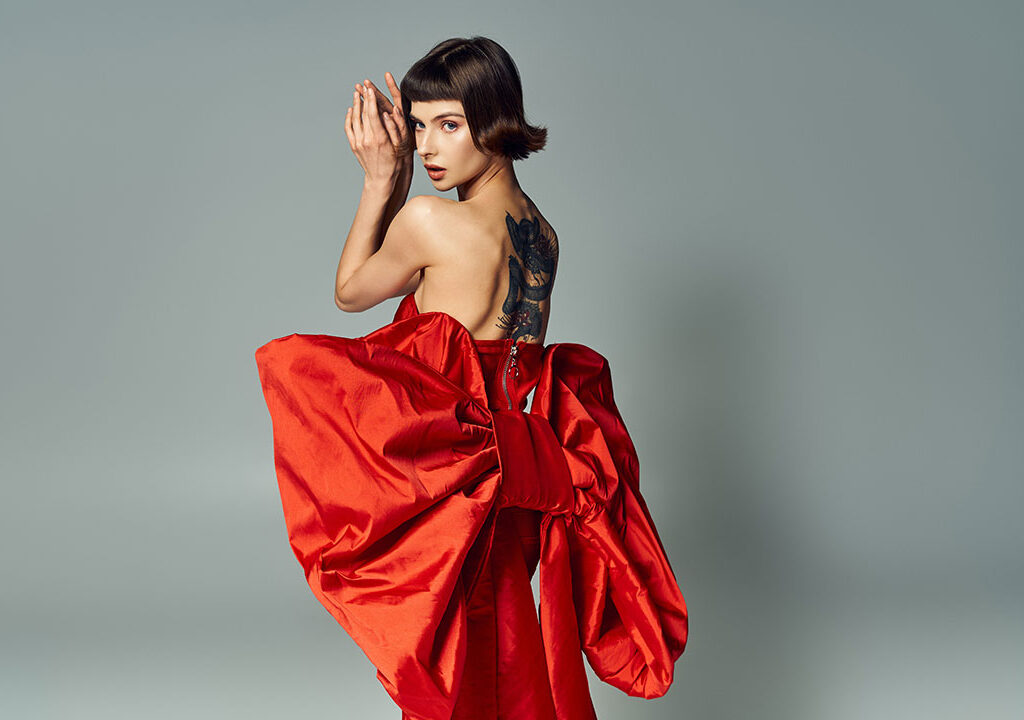
Haute Couture vs. Ready-to-wear
Fashion design is divided into various categories, with haute couture and ready-to-wear (prêt-à-porter) representing two of the most distinct and influential sectors. Each has its own design process, target audience, and level of exclusivity.
Haute Couture
Haute couture, meaning “high sewing” in French, refers to exclusive, custom-made fashion that is meticulously crafted for individual clients. It represents the pinnacle of luxury and craftsmanship in the fashion world.
- Key Features:
- Handmade garments created using intricate techniques.
- Tailored specifically to fit one client’s body measurements.
- Uses the finest fabrics, embellishments, and materials.
- Designed by elite fashion houses like Chanel, Dior, and Givenchy.
- Requires extensive labor, sometimes taking hundreds of hours to complete a single piece.
- Challenges:
- Extremely high production costs.
- Limited customer base due to exclusivity and pricing.
- Requires approval by the Chambre Syndicale de la Haute Couture in Paris to be officially recognized.
- Opportunities:
- Maintains the heritage and artistry of fashion craftsmanship.
- Helps establish a designer’s prestige and brand identity.
- Often influences trends in other fashion categories.
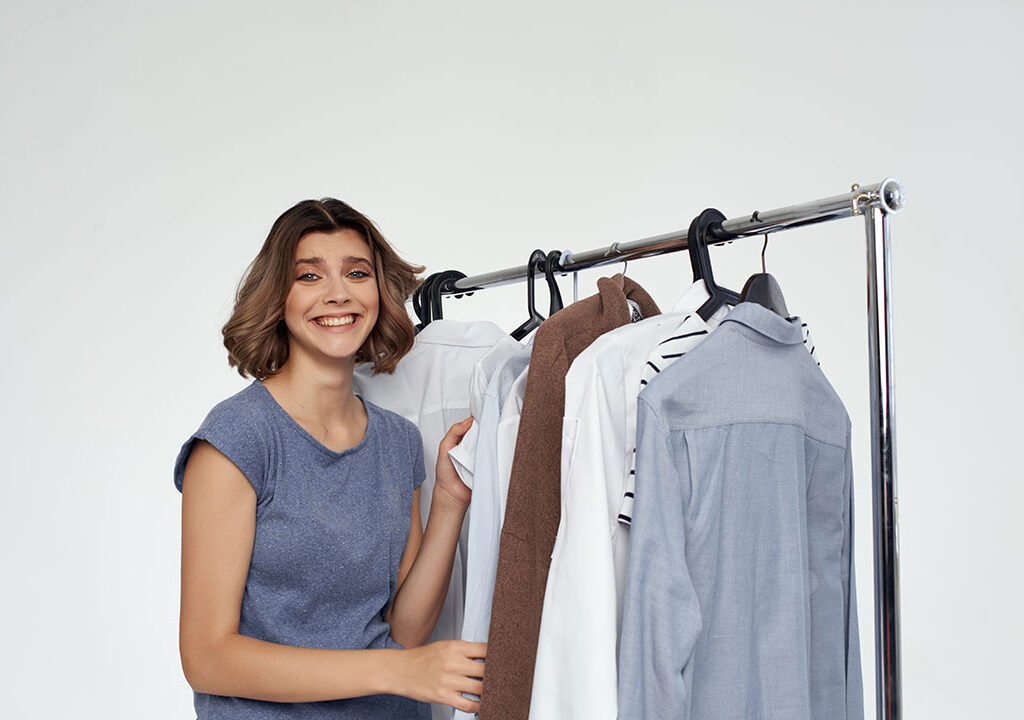
Ready to Wear
Ready-to-wear collections are mass-produced garments that are designed for the general public. While still high-quality, these pieces are made in standard sizes and sold in retail stores.
- Key Features:
- Produced in factories for wider distribution.
- Designed in seasonal collections with multiple sizes available.
- More affordable and accessible than haute couture.
- Includes a mix of luxury brands (e.g., Prada, Balenciaga) and mainstream labels (e.g., Zara, H&M).
- Challenges:
- High competition in the commercial fashion market.
- Trends shift quickly, requiring constant adaptation.
- Sustainability concerns due to mass production and waste.
- Opportunities:
- Wider customer base and increased revenue potential.
- Ability to adapt to changing fashion trends quickly.
- Expanding into sustainable and ethical ready-to-wear lines.
Which One is Right for You?
Aspiring designers must decide whether they want to create exclusive, art-driven haute couture or trend-focused, commercially viable ready-to-wear collections. Many designers start in ready-to-wear and later expand into haute couture once they establish their brand.
Sustainable and Ethical Fashion
Sustainable fashion focuses on reducing environmental impact through eco-friendly materials, ethical production, and waste reduction. This includes using organic fabrics, recycled materials, and sustainable dyeing techniques. Brands also adopt circular fashion principles like upcycling and resale.
Ethical fashion prioritizes fair wages, safe working conditions, and humane treatment of workers in the supply chain. It also includes cruelty-free and vegan fashion, ensuring no harm to animals.
Both movements aim to create a responsible fashion industry that values people, the planet, and long-term sustainability over fast fashion practices.
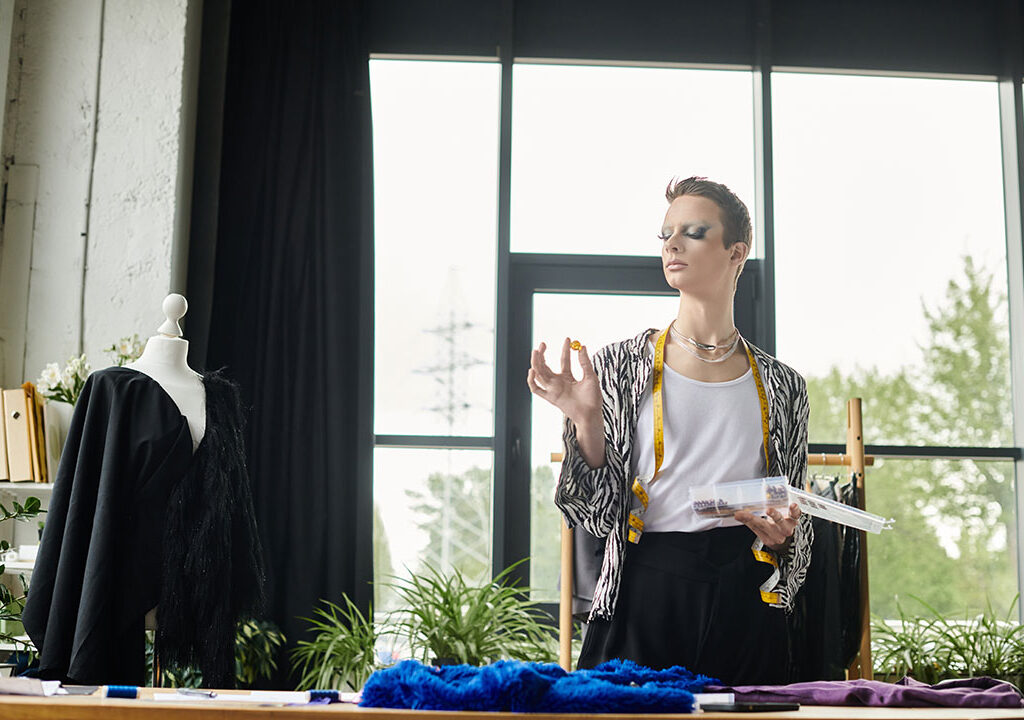
Becoming a Sustainable Fashion Designer
Sustainability in fashion is no longer just a trend—it’s a necessity. As a fashion designer, embracing sustainable practices means creating clothing that minimizes environmental impact while promoting ethical labor practices. Sustainable fashion focuses on reducing waste, using eco-friendly materials, and ensuring fair wages for workers.
Key Steps to Becoming a Sustainable Fashion Designer
1. Educate Yourself on Sustainable Practices
Understanding the principles of sustainability is crucial. This includes knowledge of:
- Eco-friendly materials – Organic cotton, hemp, bamboo, Tencel, and recycled fabrics.
- Ethical production – Ensuring fair wages and safe working conditions for garment workers.
- Waste reduction – Upcycling, zero-waste pattern-making, and using deadstock fabrics.
There are many online courses, workshops, and sustainability-focused fashion programs to enhance your expertise.
2. Source Ethical and Sustainable Materials
Choosing the right fabrics and materials is essential. Look for:
- GOTS-certified organic cotton (Global Organic Textile Standard).
- Recycled textiles from plastic bottles or old garments.
- Plant-based dyes instead of chemical-based alternatives.
Working with suppliers that prioritize sustainability ensures that your designs align with ethical standards.
3. Adopt Zero-Waste and Circular Fashion Principles
Sustainable designers focus on reducing fabric waste by:
- Creating patterns that use every piece of fabric.
- Repurposing fabric scraps into accessories or trims.
- Designing multi-functional garments that can be worn in multiple ways.
Circular fashion encourages using materials that can be recycled or biodegraded instead of ending up in landfills.
4. Implement Ethical Manufacturing Processes
If you work with manufacturers, ensure they follow ethical labor standards. Sustainable production means:
- Partnering with factories that provide fair wages and safe environments.
- Supporting artisan communities for handmade, slow fashion pieces.
- Considering local production to reduce carbon emissions from shipping.
5. Educate Consumers and Promote Transparency
A sustainable fashion brand should be transparent about its processes. You can:
- Share behind-the-scenes information on how garments are made.
- Label clothing with details about materials and production methods.
- Encourage customers to care for their garments to extend their lifespan.
Using social media, blogs, and websites to educate customers helps create a loyal, conscious consumer base.
6. Explore Sustainable Business Models
Sustainable designers often experiment with innovative business approaches, such as:
- Made-to-order fashion – Producing garments only after an order is placed to avoid overproduction.
- Clothing rental services – Renting out designer pieces instead of selling them outright.
- Upcycling collections – Transforming old clothing into new, stylish pieces.
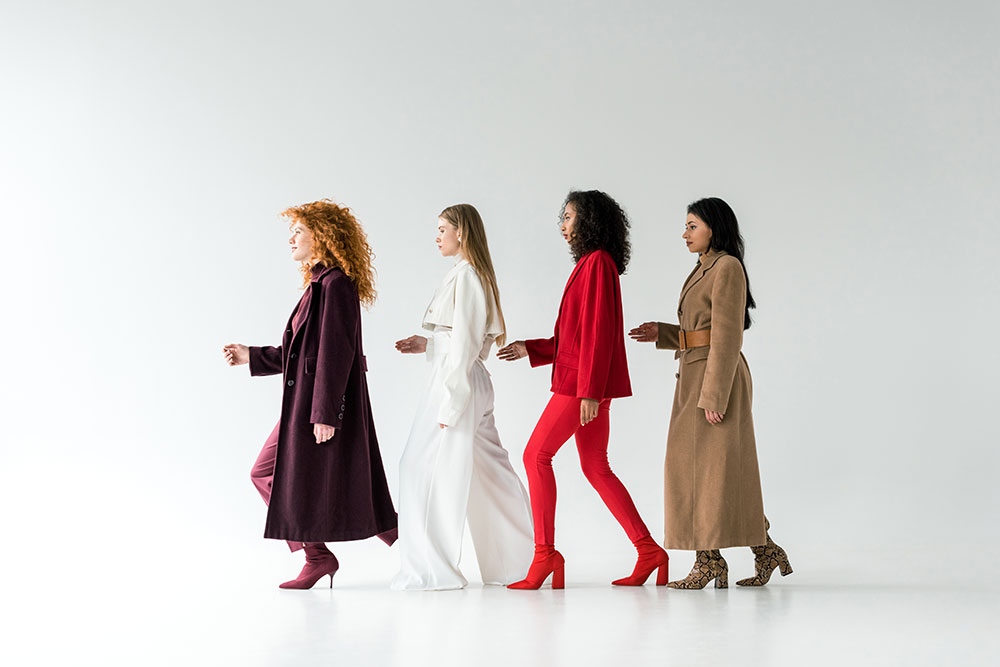
Designing for Slow Fashion Brands
Slow fashion prioritizes quality, sustainability, and ethical production over mass production and trends. When designing for slow fashion brands, consider the following:
1. Sustainable Materials & Craftsmanship
- Use eco-friendly fabrics like organic cotton, linen, hemp, and Tencel.
- Incorporate natural dyes and low-impact production techniques.
- Focus on durable construction to create long-lasting garments.
2. Timeless & Versatile Designs
- Avoid fast-changing trends; design classic, seasonless pieces.
- Create versatile silhouettes that can be styled multiple ways.
- Prioritize comfort and practicality for everyday wear.
3. Ethical & Transparent Production
- Work with local artisans, fair trade cooperatives, and ethical factories.
- Emphasize small-batch production to reduce waste.
- Ensure transparency in the supply chain and sourcing.
4. Minimal Waste & Circular Design
- Incorporate zero-waste pattern-making and upcycled materials.
- Encourage repair, resale, and recycling to extend product life.
- Use biodegradable or recyclable packaging.
5. Storytelling & Brand Values
- Communicate the craftsmanship, sustainability, and ethics behind each design.
- Engage consumers through educational content in slow fashion.
- Build a loyal community around conscious consumption.
Continue Reading:
- How to Become a Fashion Designer? / Part 1
- How to Become a Fashion Designer? / Part 2
- How to Become a Fashion Designer? / Part 3
- How to Become a Fashion Designer? / Part 4
- How to Become a Fashion Designer? / Part 5
- How to Become a Fashion Designer? / Part 6
- How to Become a Fashion Designer? / Part 7
Written by Urtė Mikaitė
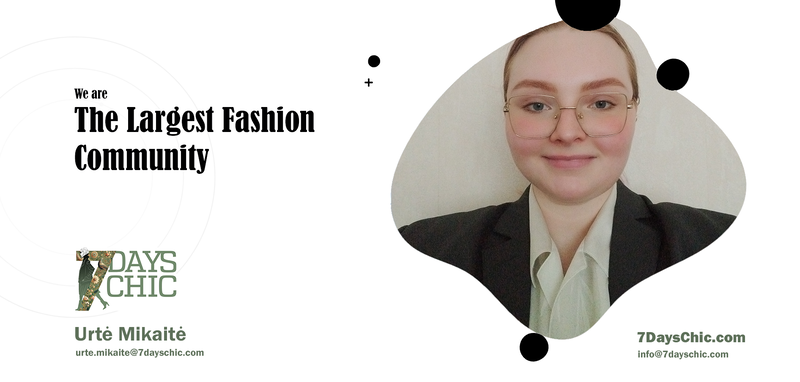
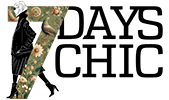
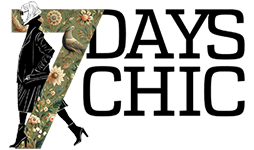
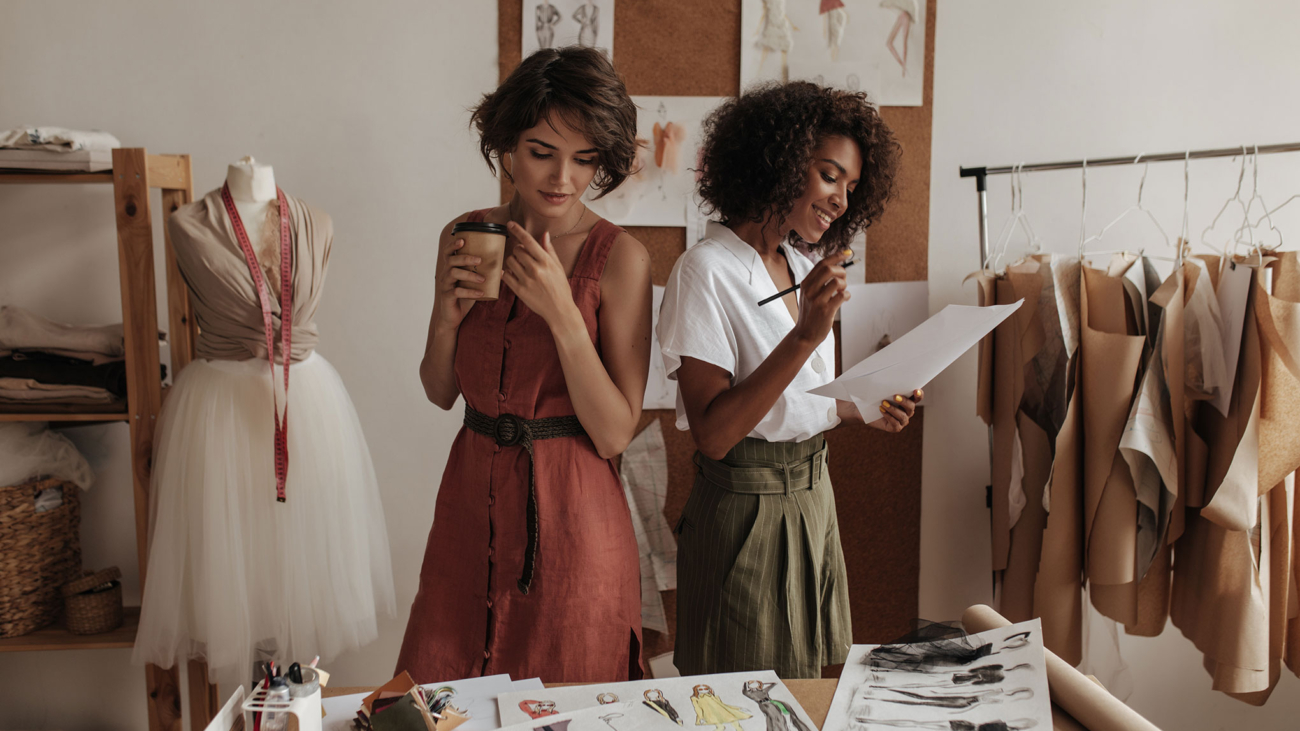
Add a Comment